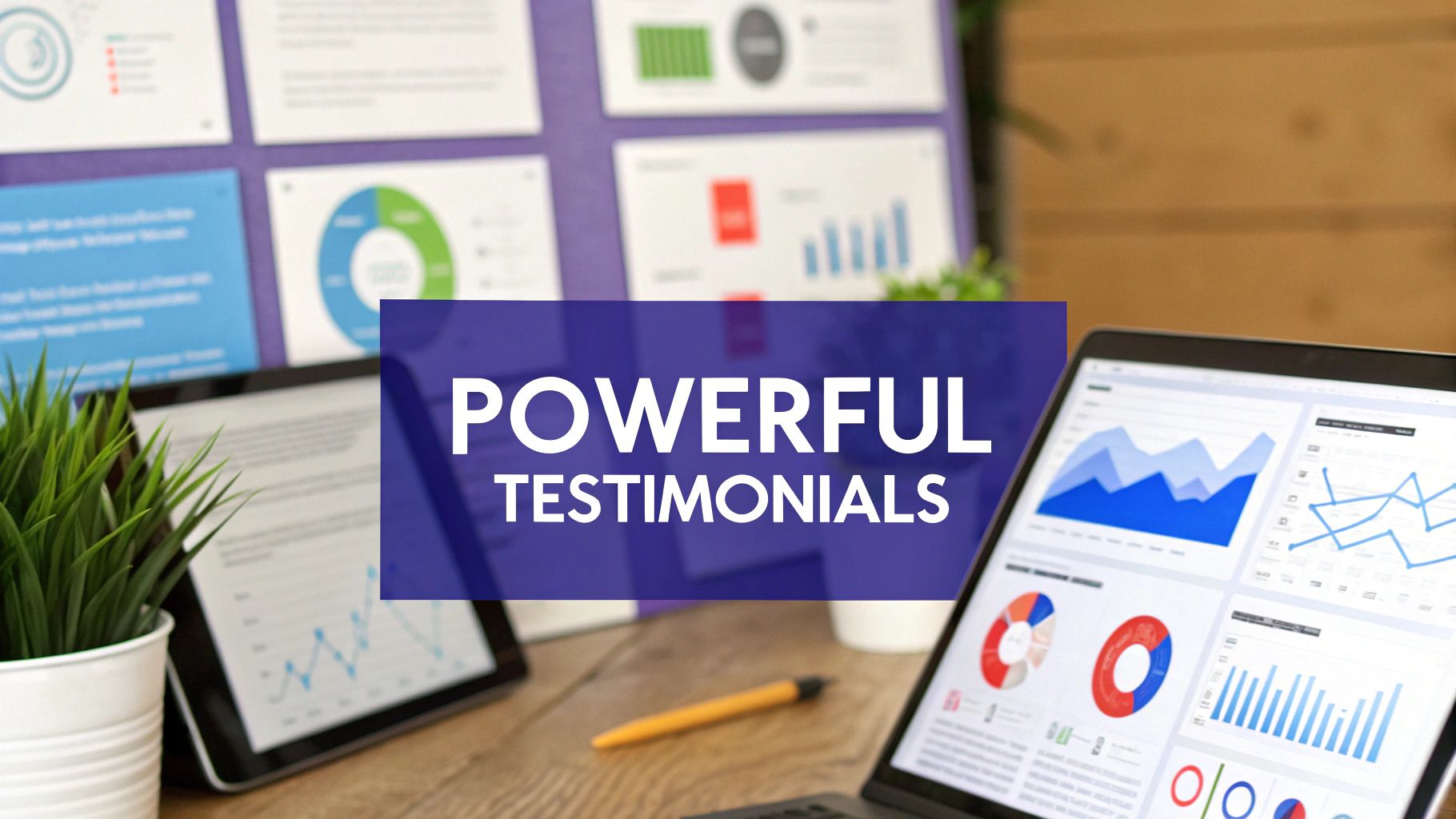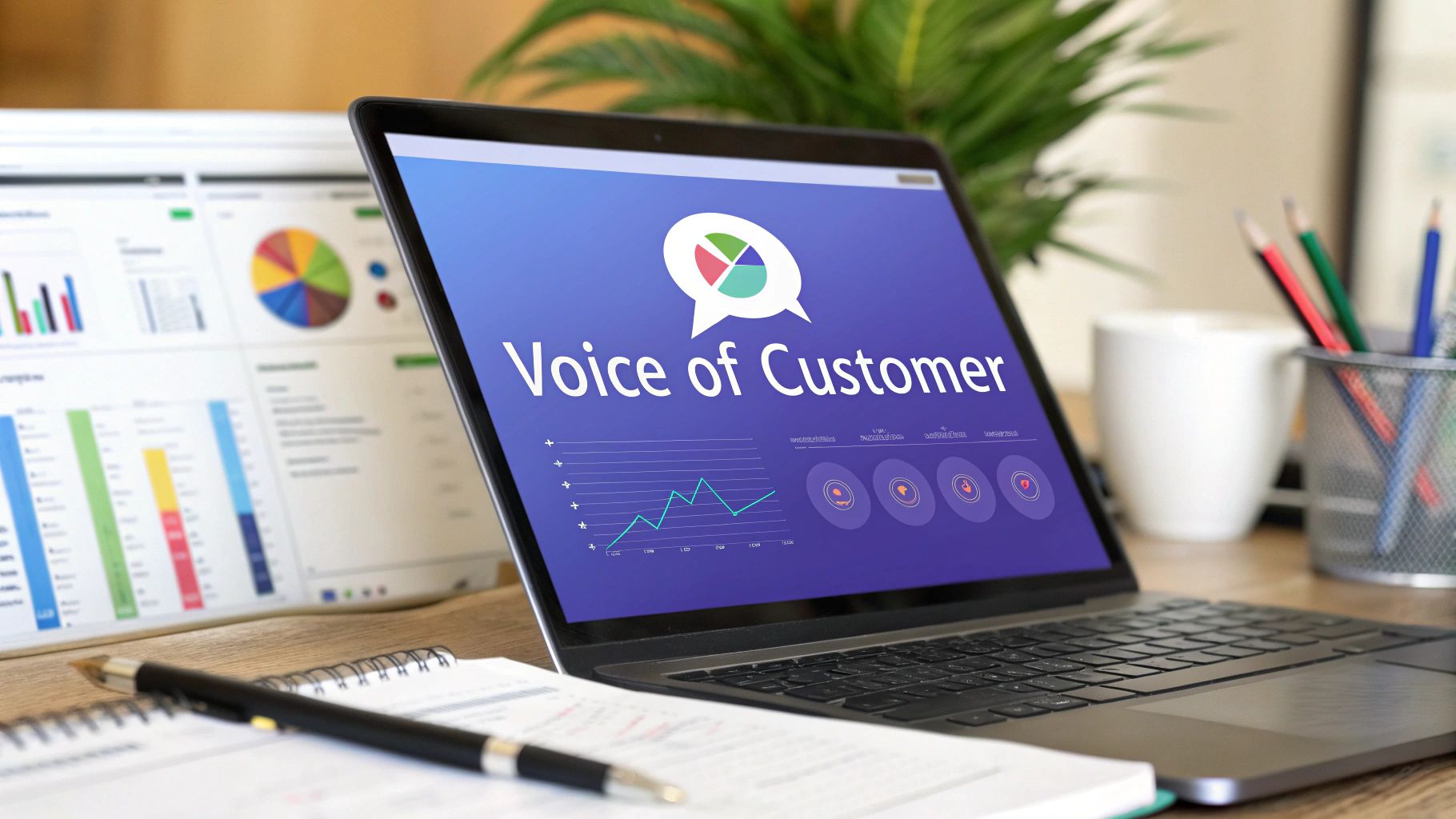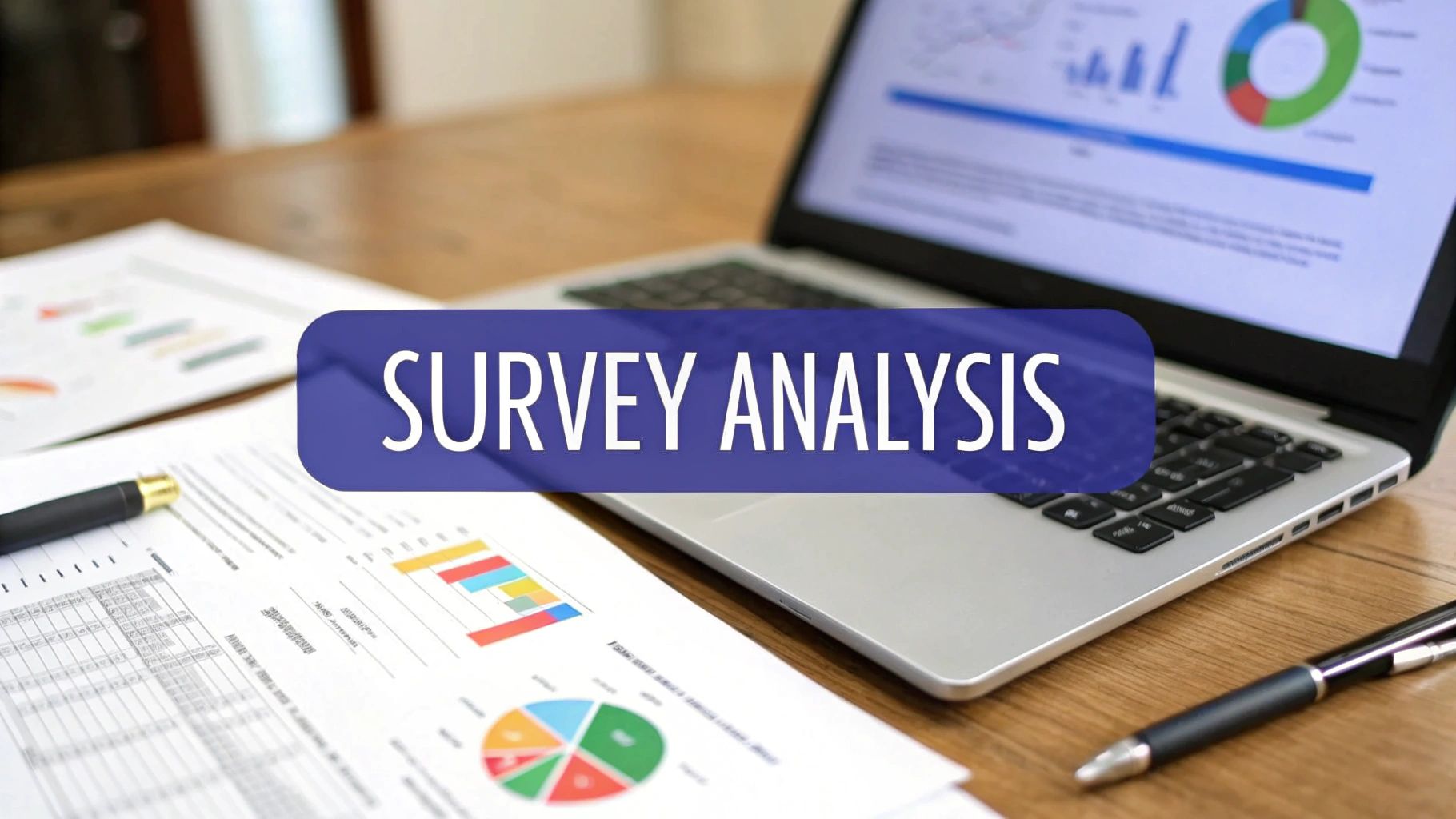8 Customer Segmentation Examples for SaaS in 2025
Discover 8 powerful customer segmentation examples with actionable strategies for SaaS teams. Learn how to reduce churn and drive growth.
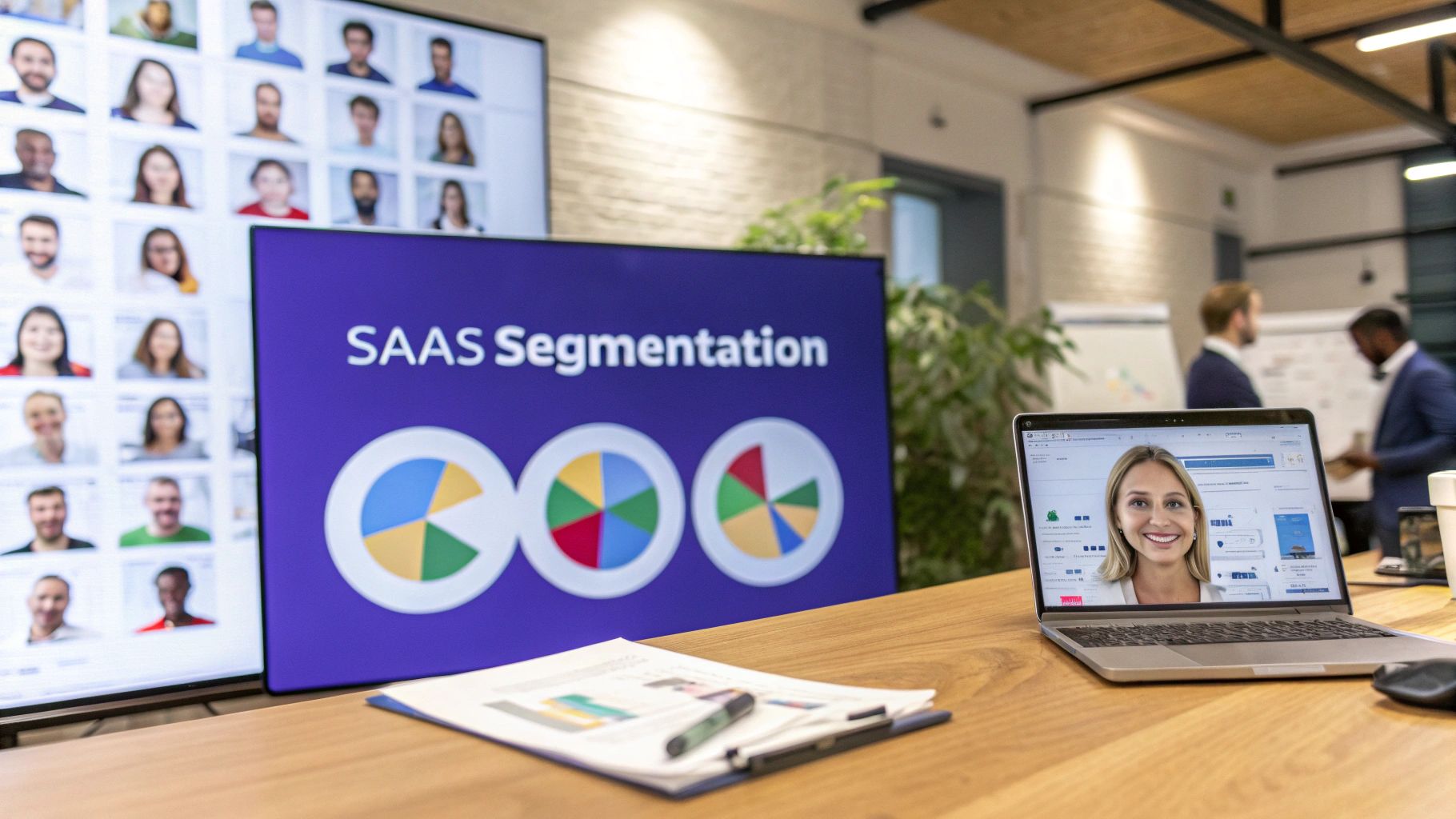
Trying to market your SaaS product to "everyone" is a surefire way to connect with no one. The one-size-fits-all approach to marketing, product development, and customer support simply doesn't work. The key to sustainable growth lies in understanding that your user base is not a monolith but a collection of distinct groups with unique needs, goals, and behaviors. This is where smart customer segmentation becomes your most powerful strategic tool.
This guide moves beyond theory to provide a deep dive into actionable customer segmentation examples specifically for SaaS teams. We will break down eight critical segmentation models, from demographic and behavioral to more advanced value-based and technographic approaches. For each example, we'll analyze the strategy, uncover the "why" behind it, and provide replicable tactics you can implement immediately.
The goal isn't just to define terms; it's to equip you with a framework for identifying your most valuable customer groups. Properly segmenting users allows for personalized messaging, prioritized feature development, and more effective user engagement. For SaaS companies looking to refine their approach, applying these models early in the customer journey is crucial, and you can find specific methodologies in these best practices for onboarding segmentation. Let’s explore the specific examples that will help you tailor experiences that resonate and convert.
1. Demographic Segmentation
Demographic segmentation is one of the most straightforward and common customer segmentation examples, dividing a market based on observable, people-based attributes. These variables include age, gender, income, education level, and family lifecycle stage. For SaaS companies, it’s a foundational layer of analysis because the data is often easy to acquire and provides a clear, high-level view of who is using your product.
While simple, this method is powerful. For instance, a project management tool might find that users aged 25-34 in high-income brackets prefer advanced, feature-rich plans, while users aged 50+ prefer simplified interfaces with robust support. This insight directly informs product tiering, marketing messaging, and onboarding processes.
Strategic Analysis & Application
The primary strength of demographic segmentation lies in its ability to identify broad user groups with distinct needs. A B2B SaaS platform for financial compliance, for example, would target users based on their occupation (e.g., CFOs, Compliance Officers) and the size of their company, which often correlates with income and budget.
Key Strategic Insight: Use demographic data not as a final targeting solution, but as a starting point. Combine it with behavioral or psychographic data to create truly nuanced and effective customer personas that go beyond surface-level statistics.
Actionable Takeaways for SaaS Teams
- Tailor Onboarding: Create different onboarding flows based on role or age. A younger, more tech-savvy user might prefer a self-guided product tour, while an older executive may value a one-on-one demo.
- Refine Pricing Tiers: Analyze the income levels and company sizes of your user base. This can reveal opportunities to create new pricing tiers, like an "enterprise" plan for high-income segments or a "starter" plan for smaller businesses.
- Focus Ad Campaigns: Use demographic filters in your paid ad campaigns (e.g., on LinkedIn or Facebook) to target specific job titles, age ranges, and industries, ensuring your marketing spend is highly efficient.
The infographic below highlights three core variables frequently used in demographic segmentation.
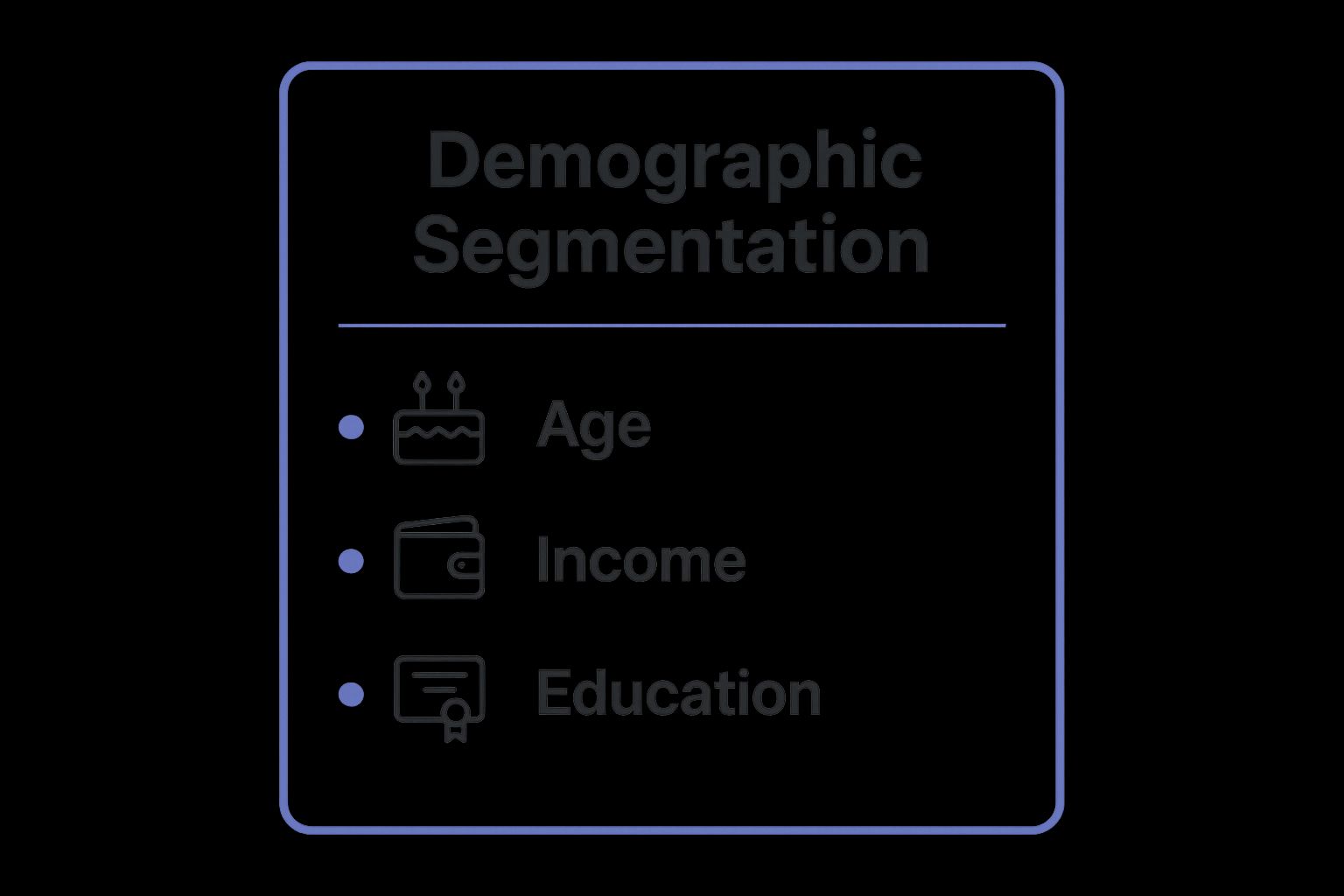
As visualized, variables like age, income, and education provide a quick and powerful snapshot, helping teams align product features and messaging with the right audience.
2. Psychographic Segmentation
Psychographic segmentation moves beyond "who" your customers are and focuses on "why" they make decisions. This is one of the more sophisticated customer segmentation examples, grouping audiences based on intrinsic traits like values, beliefs, attitudes, interests, and lifestyle choices. For a SaaS company, this means understanding the core motivations driving a user to seek a solution, enabling deeply resonant messaging and product design.

This method is powerful because it addresses the emotional and psychological triggers behind a purchase. For example, a note-taking app might discover one segment values "productivity and efficiency" above all else, while another values "creativity and free-form expression." These two groups require entirely different feature sets, marketing angles, and brand voices, even if their demographics are identical. You can discover more about using psychographics and consumer insights on Surva.ai to refine your strategy.
Strategic Analysis & Application
The core value of psychographic segmentation is its ability to create a strong brand identity that connects with users on a personal level. A B2B SaaS platform selling collaboration tools could segment users into "structured planners" who crave order and hierarchy versus "agile innovators" who prefer flexibility and spontaneous communication. This informs everything from the user interface layout to the language used in marketing campaigns.
Key Strategic Insight: Psychographic data uncovers the "why" behind user behavior. Use these insights to craft a brand narrative and a product experience that aligns with your ideal customers' core values and self-perception, turning users into advocates.
Actionable Takeaways for SaaS Teams
- Align Brand Messaging: Use surveys and social media listening to identify the values of your best customers. If they value sustainability, weave eco-friendly practices into your company story. If they value innovation, highlight cutting-edge features.
- Develop Feature Roadmaps: Segment users by their attitude toward technology. "Early adopters" can be a test group for beta features, while "pragmatists" need stable, proven functionality with clear benefits.
- Create Value-Driven Content: Produce blog posts, webinars, and case studies that resonate with your segments' lifestyles and interests. A tool for remote teams might create content around work-life balance, travel, and personal freedom.
3. Behavioral Segmentation
Behavioral segmentation is one of the most powerful customer segmentation examples for SaaS, as it groups users based on their direct actions and interactions with your product. This includes usage frequency, feature adoption, session duration, purchase history, and engagement with marketing communications. It moves beyond who users are and focuses on what they do.
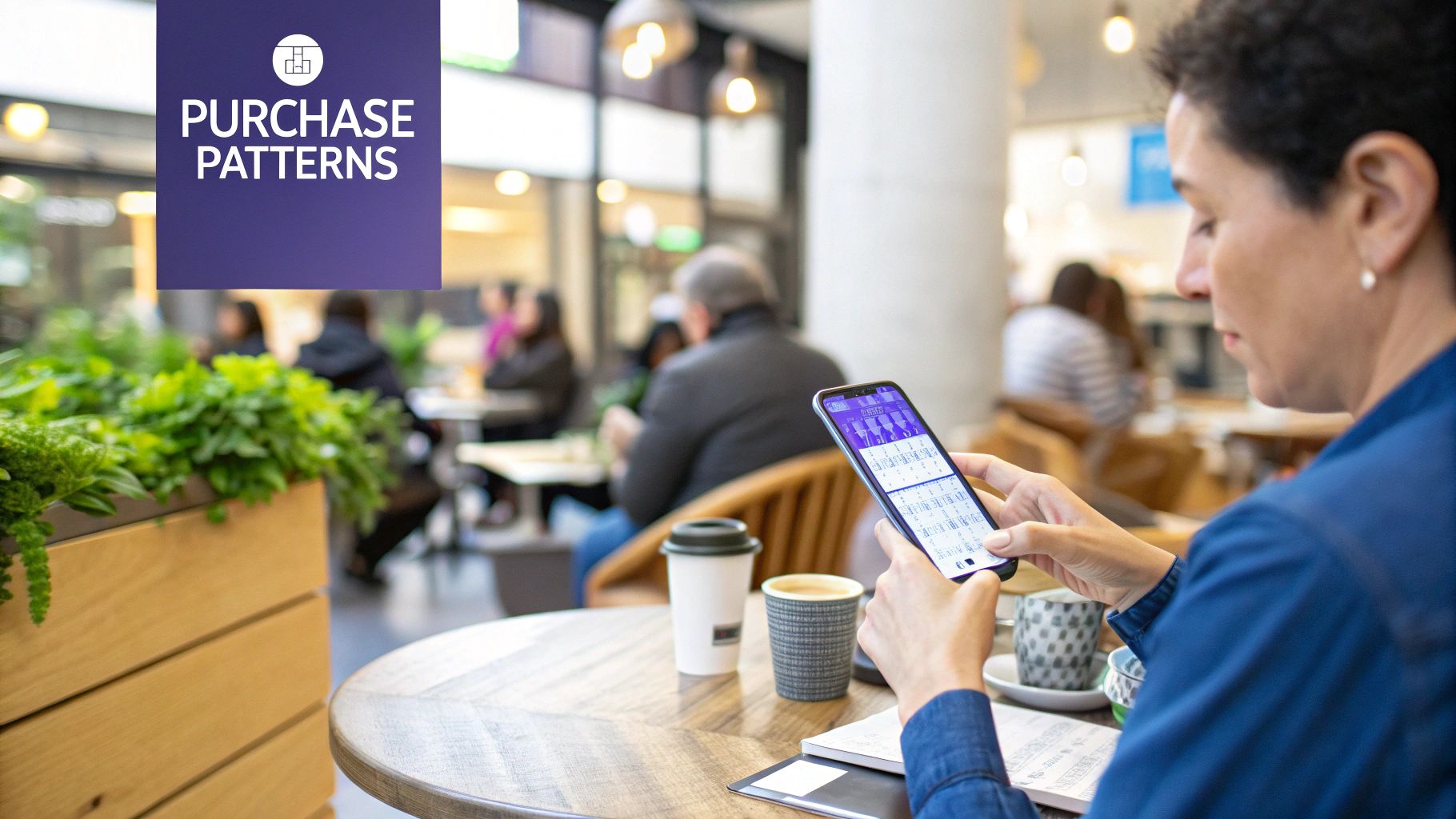
For a SaaS company, this method is invaluable. For example, Netflix categorizes users by viewing habits to power its recommendation engine, while a CRM platform might segment users into "power users" who utilize advanced automation and "basic users" who only manage contacts. This allows for hyper-targeted communication aimed at increasing engagement and preventing churn.
Strategic Analysis & Application
The core advantage of behavioral segmentation is its reliance on concrete, observed data rather than assumptions. By analyzing user actions, you can identify patterns that signal specific needs or predict future behavior. A SaaS tool might use RFM analysis (Recency, Frequency, Monetary value) to identify its most valuable customers and treat them differently from those who are at risk of churning.
Key Strategic Insight: Use behavioral triggers to automate marketing and in-app messaging. An action, or lack thereof, should trigger a corresponding, helpful reaction from your platform, guiding users toward greater value and deeper engagement.
Actionable Takeaways for SaaS Teams
- Create Trigger-Based Onboarding: Segment users who haven't adopted a key feature within their first week. Send them a targeted email or in-app guide showcasing that feature’s benefits to drive adoption.
- Identify Churn Risks: Create a segment for users whose login frequency has dropped significantly. Proactively reach out with a customer success check-in or a special offer to re-engage them.
- Reward Loyal Users: Segment your "power users" based on high feature usage or frequent logins. Offer them early access to new features, exclusive content, or loyalty discounts to strengthen their relationship with your brand.
4. Geographic Segmentation
Geographic segmentation divides a market based on the physical location of its users, such as country, region, city, or even climate zone. This approach is a critical one among customer segmentation examples because it acknowledges that user needs, legal requirements, and cultural norms can change dramatically from one place to another. For a SaaS company, this can influence everything from language localization to compliance with data privacy laws like GDPR.
This method is powerful because location often acts as a proxy for many other variables. For example, a collaboration software company might find that users in densely populated urban centers like New York or London prioritize integrations with fast-paced communication tools, while users in more remote areas may value offline functionality. Similarly, e-commerce platforms like Shopify must provide different payment gateway options based on what's popular and trusted in each country.
Strategic Analysis & Application
The core strength of geographic segmentation is its ability to help businesses adapt their product and marketing to local contexts, ensuring relevance and compliance. A SaaS tool for human resources, for example, must offer different features to manage payroll and employee benefits in the United States versus Germany due to vastly different labor laws and tax structures. Segmenting by country is not just a marketing choice; it's a fundamental product requirement.
Key Strategic Insight: Use geographic data to move beyond simple translation and achieve true localization. This involves adapting user interfaces, feature sets, support hours, and pricing to align with local economic conditions, cultural expectations, and regulatory landscapes.
Actionable Takeaways for SaaS Teams
- Adapt Pricing and Currency: Offer pricing in local currencies to reduce friction at checkout. Analyze regional economic conditions to implement dynamic pricing strategies, making your product more accessible in emerging markets.
- Localize Marketing Campaigns: Tailor your ad copy, imagery, and case studies to reflect the culture and specific pain points of each geographic segment. A success story from a local company is far more persuasive than a generic one.
- Prioritize Feature Development: Use geographic usage data to inform your product roadmap. If you see high adoption in a specific region, survey those users to identify unmet needs, such as local compliance features or specific third-party integrations popular in that area.
The video below offers a deeper look into how geographic variables can shape marketing and product strategy.
As the video explains, factors from climate to urban density can create distinct customer needs, making geographic segmentation a vital tool for achieving global scale with local relevance.
5. Technographic Segmentation
Technographic segmentation groups customers based on the technology they use, from hardware and software to platform preferences. This is a vital and modern approach in our list of customer segmentation examples, especially for SaaS and technology companies. It goes beyond simple demographics to understand a customer's tech stack, adoption rates, and digital fluency, providing critical context for product development and marketing.
For instance, a cybersecurity SaaS might find that companies using cloud-native infrastructure (like AWS or Azure) are prime candidates for its advanced threat detection module. In contrast, businesses still relying on on-premise servers may need a different solution or marketing message. Similarly, a design tool provider like Adobe can segment users based on their expertise with specific Creative Cloud applications, tailoring content and feature recommendations accordingly.
Strategic Analysis & Application
The core strength of technographic data is its ability to predict need and compatibility. Knowing a prospect’s current CRM, marketing automation platform, or even their web hosting provider allows a sales team to tailor their pitch, highlighting integration capabilities and specific pain points related to that existing tech stack. This moves the conversation from a generic "what we do" to a specific "how we help you, given what you already use."
Key Strategic Insight: Use technographic data to qualify leads and personalize outreach at scale. A prospect using a competitor’s product isn’t a lost cause; they are a highly qualified lead who has already identified a need and allocated a budget for a solution like yours.
Actionable Takeaways for SaaS Teams
- Build Integration Roadmaps: Analyze the most common software used by your ideal customers. Prioritize building integrations that will make your product a seamless addition to their existing workflows, creating a strong competitive advantage.
- Target Competitor User Bases: Use tools like BuiltWith or G2 to identify companies using competing software. Target them with ad campaigns highlighting your superior features, better pricing, or unique integrations.
- Personalize Sales Demos: Equip your sales team with technographic insights. A demo for a company using Salesforce should look very different from one for a company using HubSpot, focusing on the specific integration points and benefits relevant to them.
6. Value-Based Segmentation
Value-based segmentation is a powerful strategic approach that groups customers based on their economic worth to the business. This is one of the most impactful customer segmentation examples because it moves beyond who customers are to what they are worth. Key metrics include customer lifetime value (CLV), average revenue per user (ARPU), and overall profitability. For SaaS companies, it’s about identifying and prioritizing high-value accounts to maximize revenue and resource allocation.
This method allows businesses to focus their most expensive resources, like dedicated account managers or premium support, on the customers who generate the most revenue. For example, a SaaS company might discover its enterprise-tier clients contribute 70% of its revenue. This insight justifies creating a bespoke "white glove" service level exclusively for this high-value segment to ensure retention and foster growth.
Strategic Analysis & Application
The core strength of value-based segmentation is its direct link to financial outcomes. It enables companies to make data-driven decisions about where to invest for the highest return. A B2B analytics platform, for instance, can use this model to differentiate between a small business on a basic plan and a multinational corporation on an enterprise contract. The latter receives proactive success management and early access to beta features, strengthening the high-value relationship.
Key Strategic Insight: True value isn't just about current revenue. Integrate growth potential into your analysis. A smaller, fast-growing account could eventually surpass a large, stagnant one in lifetime value, making them a crucial segment to nurture.
Actionable Takeaways for SaaS Teams
- Implement Tiered Service Levels: Create distinct support and success tiers. High-value customers could get a dedicated Slack channel and a named account manager, while lower-value segments might use a knowledge base and community forum.
- Prioritize Product Feedback: When evaluating feature requests, give more weight to feedback from your most valuable customer segments. Their needs are more likely to drive significant revenue growth and market expansion.
- Optimize Retention Efforts: Focus proactive churn-prevention campaigns on your high-CLV segments. The ROI of saving a high-value customer is exponentially greater. To get started, you can learn more about how to calculate CLTV and apply it to your user base.
7. Needs-Based Segmentation
Needs-based segmentation groups customers according to the specific functional or emotional outcomes they are trying to achieve. This is one of the most powerful customer segmentation examples because it moves beyond who the customer is and focuses on why they need a solution. Popularized by frameworks like Jobs-to-be-Done (JTBD), this approach helps companies understand the core problems, pains, and aspirations driving purchase decisions.
For a SaaS company, this means identifying the "job" a customer "hires" your product to do. For instance, a tool like Slack isn't just for messaging; it's hired to solve the need for reduced email clutter, faster team collaboration, and a centralized communication hub. Understanding these underlying needs allows for hyper-relevant product development and marketing.
Strategic Analysis & Application
The core of needs-based segmentation is uncovering the specific circumstances and desired outcomes that trigger a search for a new solution. A collaboration platform might find one segment needs to streamline asynchronous communication for a remote team, while another needs to manage high-stakes, real-time project deadlines. These are distinct needs that demand different feature sets and value propositions.
Key Strategic Insight: Frame your product not by its features, but by the needs it fulfills. Customers don't buy a drill; they buy a hole in the wall. Focus your messaging and development on solving the customer's "job" better than any alternative.
Actionable Takeaways for SaaS Teams
- Apply the Jobs-to-be-Done Framework: Conduct customer interviews to uncover the "job" they hire your product for. Ask about the struggles they faced with previous solutions to identify unmet needs.
- Create Needs-Based Personas: Develop personas centered on desired outcomes, not just demographics. For example, "The Efficiency Seeker" who needs to automate repetitive tasks vs. "The Collaboration Champion" who needs to improve team synergy.
- Map Features to Needs: Align your product roadmap by prioritizing features that solve the most urgent and frequent customer needs. This ensures you are building what truly matters to your user base.
8. Occasion-Based Segmentation
Occasion-based segmentation is a powerful temporal method, grouping customers based on specific events, times, or circumstances when they purchase or engage with a product. This is another highly relevant type of customer segmentation examples, as it acknowledges that a single user's needs and purchasing intent can change dramatically depending on the context. For SaaS, this goes beyond simple holidays to include project kick-offs, fiscal year-end reporting, or seasonal business cycles.
For instance, a tax preparation software company experiences a massive surge in sign-ups and usage from January to April. Similarly, an event management platform sees peaks in engagement corresponding to conference seasons or major holidays. Recognizing these temporal triggers allows businesses to align their marketing, support, and product features with the precise moments their users need them most.
Strategic Analysis & Application
The core value of occasion-based segmentation is its ability to create timely and highly relevant user experiences. It shifts the focus from who the customer is to when and why they need a solution. A B2B SaaS tool for project management might identify "new project launch" as a critical occasion. This allows them to target teams with messaging about efficient setup, collaboration templates, and quick-start guides right when those benefits are most needed.
Key Strategic Insight: Go beyond obvious calendar events. Map out the entire user lifecycle to identify recurring, business-specific occasions (e.g., quarterly reviews, annual budget planning, new hire onboarding) that trigger a need for your SaaS solution.
Actionable Takeaways for SaaS Teams
- Create Occasion-Specific Campaigns: Develop automated email sequences or in-app messages that trigger based on time or specific user actions signaling an "occasion." For example, a "Welcome to the Team" sequence for new users added to an existing account.
- Develop Timely Product Bundles: Offer special bundles or features tailored to a specific occasion. A design software could offer a "Holiday Campaign" template package in November and December.
- Align Content with User Timing: Publish blog posts, webinars, and guides that address the immediate needs of an occasion. For instance, an accounting tool could release "Year-End Reporting Best Practices" content in the final quarter. Learn more about how this aligns with customer journey optimization.
Customer Segmentation Types Comparison
From Theory to Action: Building Your Segmentation Engine
We've explored a diverse landscape of customer segmentation models, moving far beyond basic demographics to uncover the strategic depth required to thrive in today's competitive SaaS market. From the nuanced psychology of psychographic profiles to the practical precision of technographic data, the common thread is clear: effective segmentation is not a one-time task but a dynamic, ongoing process of discovery and refinement.
The customer segmentation examples we've analyzed demonstrate that the most successful companies don't just categorize users; they develop a profound understanding of their motivations, challenges, and goals. They see segmentation as the foundational blueprint for building resonant products, crafting personalized marketing messages, and delivering exceptional customer experiences.
Your Strategic Takeaways and Next Steps
As you move from reading these examples to implementing your own strategy, keep these core principles at the forefront. They are the difference between a segmentation model that sits on a shelf and one that actively drives growth.
- Start with Your "Why": Before choosing a model, define the business objective. Are you trying to reduce churn, increase feature adoption, improve onboarding, or enter a new market? Your goal will dictate the most relevant segmentation approach.
- Combine and Conquer: The most powerful insights rarely come from a single segmentation model. The true magic happens when you layer different approaches. Combine behavioral data (what users do) with psychographic data (why they do it) or technographic data with value-based segments to create a multidimensional view of your customer base.
- Action is Everything: A segment is only useful if it inspires a specific action. For every segment you define, you must be able to answer the question, "What will we do differently for this group?" This could be a tailored onboarding flow, a targeted feature announcement, or a proactive customer success check-in.
- Iterate and Evolve: Your customers change, your product evolves, and the market shifts. Your segmentation strategy must be agile enough to adapt. Schedule regular reviews (quarterly is a good starting point) to validate your segments, test new hypotheses, and discard models that are no longer effective.
Putting Segmentation into Practice
Once you've defined your initial segments, the next critical step is to activate them across your organization. This is where segmentation becomes the engine for highly targeted, efficient growth strategies. For instance, value-based and needs-based segments are perfect for informing your go-to-market motion. To see how advanced segmentation is applied in practice, you can review top Account-Based Marketing (ABM) campaign examples that leverage deep customer understanding to engage high-value accounts with precision.
Ultimately, mastering customer segmentation empowers you to move from broad assumptions to data-driven certainty. It allows every team, from product to marketing to sales, to operate with a shared, nuanced understanding of who they are serving. This alignment is the ultimate competitive advantage, enabling you to build not just a product that people use, but a solution they can't live without.
Ready to uncover the hidden needs and motivations within your own customer base? Surva.ai uses AI-powered surveys to go beyond surface-level data, helping you build rich, actionable psychographic and needs-based segments automatically. Stop guessing and start understanding with Surva.ai.
